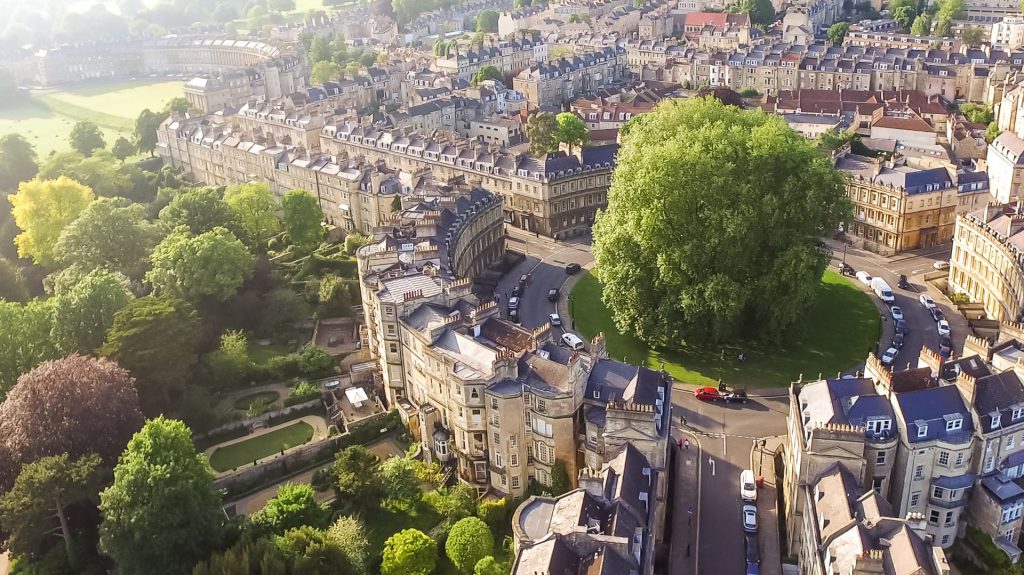Don’t be fooled by Bath’s genteel architecture. Behind the façade is a heated debate about the city’s future. Traffic, pollution, affordability and economic growth are the usual key issues, but with the added complexity of being a UNESCO world heritage setting.
How change should be managed was the subject of the Festival of the Future City, which we kicked off with a sold-out evening of PechaKucha talks under the banner ‘Liveable Bath’. Rob Delius summarises.

Bath is known for its many qualities – a thriving cultural scene, a high proportion of independent shops, outstanding green space, beautiful buildings and a compact walkable centre. These make it a highly liveable place. However, as our 10 speakers demonstrated, there is room for improvement.
Challenged with getting under Bath’s skin, each proposed tangible actions to make it the UK’s most liveable city. After I had introduced the concept of liveable world rankings, as measured by Mercer, the Economist Intelligence Unit and Monocle (basically, we should all move to Vienna or Melbourne), the talks began with Phil Hampshire, Director of sustainability company 3ADAPT.
Get social
Phil had analysed social media metrics to find out what people are saying about the city and how we can use this to improve it. Water featured prominently, from the city’s spas to Pulteney Weir and the Roman Baths, so he encouraged Bath to make more of this connection. The impact of transient activities was also important (think Southgate colourful umbrellas, or the city’s festivals).

Should water be celebrated more, using initiatives like Waters of Bath?
Phil suggested using Strava to see which routes walkers and cyclists are using, and whether there could be an alternative route network compared to the conventional road system. He wondered whether Bath needed a ‘Creative Cluster’.
Stride Treglown’s Ian Parkes and Eirini Christofidou were up next and they challenged us to think of Bath as a continuously evolving city. While it is easy to think of Bath as Georgian, each era has left its mark and we should not be afraid to add new layers and stories through what we build. A liveable city is a living city.
Go green
Head of landscape architects LT Studio, Marc Dix, campaigned for a better public realm and revealed how green infrastructure had, in many cases, disappeared from the city. Did you know there were once trees down the iconic Great Pulteney Street?
Cycle Bath’s Adam Reynolds made an impassioned case for a ‘living heart’ – a vehicle free, pedestrianised centre. Based on feedback after the event, this struck a chord with the audience who thought it should be a main priority for the Council.
Rebecca Fox from social change supporters Good for Nothing suggested a Liveable Bath Network to capture all of the projects and initiatives already underway in the city, which, in many cases, are working in isolation. Her thoughts were echoed by Dominic Tristram from the Green Party, who provided the most holistic vision for a Liveable Bath. He looked at cities like Vancouver, who have stated clear aims and were making steady, measurable steps towards meeting them.

Independent shops, the lifeblood of any town or city?
“The Council and Visit Bath should do more to promote independent businesses” stated owner of The Foodie Bugle Shop and passionate Independent Bath campaigner, Silvana de Soissons. Independent businesses make an enormous cultural, economic and wellbeing contribution to the city and they should enjoy better signage and mapping.
Shop local
Silvana was joined by Greg Barden, founder of Pixie, the indie business app, who also said how independent businesses are the lifeblood of the community, key to making all cities and towns economically sustainable and liveable for locals, but also rich in experience for visitors. He proposed corporate-free areas to prevent further homogenisation, rent and rate caps in key development areas to encourage the next generation of entrepreneurs and, like Adam earlier, vehicle free zones.
Charles Brindley from Active Thinking concluded. He spoke about how the quality of the physical environment is intrinsically linked to our experience of the city. Well-designed environments lower our stress and are a pleasure to use. We need to transfer what we know about customer experience in the usual context of shops, businesses or buildings to an urban scale – how should we design a city to best meet the needs of its users?
In a later talk organised by the Widcombe Association, landscape architect Andrew Grant covered similar themes. His message was unequivocal: the landscape backdrop of our daily lives has a profound effect on our wellbeing.
What’s next?
It was clear from both the passionate speakers and the passionate audience that there is a huge amount of emotional investment in Bath’s future. And they don’t want business as usual. They want Bath to shine, for it to become the most liveable city in the UK. They have ideas about how to make this happen and they want to be heard.
To push this forward we are compiling a manifesto for a Liveable Bath. Watch this space.
Rob Delius is the Head of Sustainable Design for Stride Treglown, and, like Phil Hampshire, believes water should be more prominent in Bath. He is the founder of Waters of Bath, an initiative to celebrate water more prominently across the city. Waters of Bath is now looking for funding, find out more.